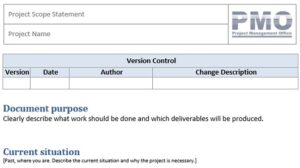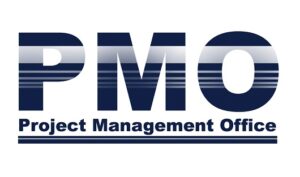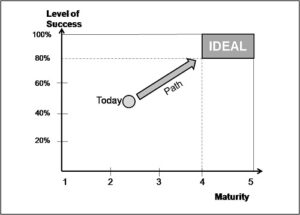Have you ever wondered why some projects soar while others struggle to take off? The answer often lies in the strength of stakeholder relationships. Stakeholder Performance Domain focuses on building and nurturing these relationships, which are crucial for navigating the complexities of project management. By understanding and engaging with stakeholders effectively, projects can align better with goals and achieve outstanding results.
In this article, we’ll explore how the Stakeholder Performance Domain redefines influence, governance, and collaboration as measurable drivers of project value and performance.
What Is the Stakeholder Performance Domain?
Every successful project is powered by people. Stakeholder Performance Domain is a focused area designed to ensure that projects are not only executed effectively but also accepted, supported, and sustained by those who matter most. It is a continuous, strategic discipline that ensures alignment, trust, and engagement throughout the entire project lifecycle.
At its core, this domain focuses on how stakeholder needs, expectations, and levels of influence are identified, analyzed, and engaged to ensure continuous alignment with the project’s purpose and value goals.
In simple terms, it’s about knowing who your stakeholders are, what they care about, and how they can influence your project. The purpose? To build relationships that drive results. By fostering open communication and trust, project managers can navigate challenges more effectively and enhance decision-making processes.
Consider a project manager who regularly checks in with team members and clients. They’re not just ticking a box, they’re actively engaging stakeholders. This proactive approach often leads to timely feedback and valuable insights, ensuring the project meets its objectives. When stakeholders feel heard and valued, they’re more likely to support the project, increasing the likelihood of success. In essence, the Stakeholder Performance Domain is the backbone of successful project management, paving the way for collaborative achievements.
This domain helps project teams:
- Recognize who holds interest or power in the project.
- Understand what motivates them.
- Manage engagement through deliberate, transparent communication.
- Maintain trust across evolving conditions.
Ultimately, it ensures that decisions are informed by stakeholder perspectives — not dictated by them — creating a balance between influence and integrity.
The Shift from Communication to Engagement
In traditional approaches, stakeholder management often equated to communication plans: sending reports, holding meetings, and updating progress. PMBOK 8 broadens this into a dynamic engagement model, where communication is just one of many tools used to co-create value. While communication involves sharing information, engagement takes it a step further by fostering meaningful interactions and relationships.
Why the change? In today’s fast-paced world, simply disseminating information isn’t enough. Stakeholders seek involvement and influence in the projects they’re part of. They want their voices to be heard, their insights valued, and their contributions recognized. By engaging stakeholders, project managers can create a collaborative environment where everyone is working towards a common goal.
Think of engagement as a two-way street. It’s about listening as much as it is about speaking. When stakeholders feel genuinely engaged, they become more committed and invested in the outcome. This leads to better project outcomes, as stakeholders are more likely to provide support, resources, and feedback that can drive success.
In essence, the shift from communication to engagement is about building lasting relationships that not only enhance project performance but also deliver shared value. It’s an approach that recognizes stakeholders as partners in the journey, rather than just distant observers.
The new mindset emphasizes:
- Stakeholders as Partners, Not Audiences
Engagement becomes a two-way relationship where stakeholders help shape outcomes rather than merely react to updates. - Transparency Over Control
The goal is to build trust through openness, even when decisions aren’t popular. - Continuous Interaction
Engagement starts before project initiation and extends beyond closure, fostering sustained value realization.
This evolution reflects PMI’s broader shift toward systems thinking and value-based project delivery.
Identifying and Analyzing Stakeholders
Effective stakeholder performance begins with comprehensive identification and analysis. PMBOK 8 encourages project teams to approach this as a living process rather than a one-time exercise.
Key Steps Include:
- Identify Stakeholders Early: Capture internal and external individuals, groups, or entities affected by or able to affect the project.
- Map Influence and Interest: Use models such as power-interest grids or salience mapping to categorize engagement needs.
- Understand Motivations: Recognize what success means to each stakeholder to tailor communications effectively.
- Reassess Periodically: Update stakeholder analysis as influence shifts during the project lifecycle.
This ongoing mapping process ensures that engagement strategies remain relevant and effective.
Tools and Techniques
Once you’ve identified potential stakeholders, analyzing their needs and influence becomes essential. Here are some popular tools and techniques:
- Stakeholder Mapping: Visualize relationships and influence levels to understand where power lies.
- SWOT Analysis: Assess strengths, weaknesses, opportunities, and threats concerning stakeholder interests.
- Power-Interest Grid: Categorize stakeholders based on their level of authority and concern.
These tools help project managers understand stakeholder dynamics better, paving the way for effective engagement strategies. By thoroughly analyzing stakeholders, you can tailor your approach to meet their expectations and align them with project goals, fostering a successful collaboration.
Engaging Stakeholders for Value Delivery
Once stakeholders are identified, engagement must focus on co-creating value. The Stakeholder Performance Domain integrates closely with the Governance and Scope domains to ensure that expectations align with what the project can realistically deliver.
Engagement Best Practices:
- Collaborative Decision-Making: Involve key stakeholders in prioritization and trade-off discussions.
- Expectation Management: Align scope and outcomes through consistent communication of value boundaries.
- Consistent Communication & Feedback Loops: Use retrospectives, reviews, and checkpoints to capture stakeholder input continuously and keep them informed and engaged.
- Empathy and Cultural Awareness: Adapt engagement strategies to context, hierarchy, and culture.
- Transparency: Share information openly and honestly to build credibility.
- Active Listening: Understand stakeholder needs and concerns by truly listening.
- Reliability: Follow through on commitments to demonstrate dependability.
Engagement best practices include fostering an inclusive environment where stakeholders feel valued and heard. This not only strengthens relationships but also enhances value delivery. Engaging stakeholders means involving them in decision-making processes, gathering their input, and aligning project outcomes with their expectations.
By focusing on trust and active engagement, project managers can ensure that stakeholders are not just participants but advocates who drive project success. Projects that practice active, empathetic engagement often see higher satisfaction, faster conflict resolution, and stronger long-term adoption.
Communication in the Context of Performance
Communication remains vital but is reframed within PMBOK 8 as part of performance monitoring, not just information sharing. Effective communication drives measurable outcomes such as trust, alignment, and participation.
Key Principles:
- Right Message, Right Time: Tailor frequency and depth of communication to each stakeholder’s role.
- Transparency Through Metrics: Share data that connects performance results to stakeholder goals.
- Active Listening: Capture not just what stakeholders say, but what they need to understand.
- Feedback-Driven Improvement: Regularly assess communication effectiveness through surveys or engagement KPIs.
By treating communication as a performance enabler, PMBOK 8 ensures that stakeholder relationships translate directly into value delivery.
Roles and Responsibilities
The Stakeholder Performance Domain requires collaboration across all organizational levels.
| Role | Responsibility |
|---|---|
| Project Manager | Leads stakeholder identification, analysis, and engagement planning. |
| Sponsor | Advocates for project goals and mediates between business and delivery teams. |
| PMO or Governance Body | Provides standards and oversight for engagement effectiveness. |
| Project Team | Interacts with operational stakeholders and reinforces trust daily. |
Engagement success depends on shared accountability, ensuring that stakeholder satisfaction is seen as a collective performance outcome.
Measuring Stakeholder Performance
PMBOK 8 emphasizes quantifiable performance across all domains — and stakeholder engagement is no exception.
Common Stakeholder Performance Indicators (SPIs):
- Stakeholder Satisfaction Index: Measures perceived alignment and responsiveness.
- Engagement Effectiveness Score: Tracks quality and frequency of interactions.
- Conflict Resolution Rate: Monitors how quickly issues are identified and resolved.
- Trust and Transparency Rating: Gauges perception of honesty and openness.
- Participation Ratio: Percentage of key stakeholders actively involved in decisions.
Tracking these indicators enables project leaders to detect early warning signs of disengagement and act proactively.
Tailoring the Stakeholder Performance Domain
As with all PMBOK 8 domains, tailoring is essential. Engagement strategies should reflect project size, complexity, and cultural context.
| Project Type | Tailoring Focus |
|---|---|
| Predictive | Structured stakeholder register, formal reviews, and approval checkpoints. |
| Agile / Adaptive | Frequent feedback loops, demos, and open forums for collaboration. |
| Hybrid | Blend formal governance with iterative stakeholder reviews. |
Tailoring ensures the right balance between structure and agility, enabling effective engagement regardless of delivery approach.
Integration with Other Performance Domains
The Stakeholder Performance Domain directly supports — and is supported by — other PMBOK 8 domains:
- Governance Domain: Ensures accountability for stakeholder decisions.
- Scope Domain: Manages evolving expectations and defines what success looks like.
- Finance Domain: Aligns funding with stakeholder priorities and benefit realization.
- Risk Domain: Identifies and mitigates risks related to stakeholder resistance or misalignment.
This cross-domain integration reinforces the PMBOK 8 principle of holistic value delivery.
Challenges and Opportunities
Even with strong frameworks, stakeholder management remains complex. Common challenges include:
- Conflicting Priorities: Stakeholders often have competing success criteria.
- Information Overload: Too much or too little communication reduces clarity.
- Low Engagement from Executives: Sponsors may not stay actively involved.
- Cultural Barriers: Global teams require tailored engagement approaches.
- Lack of Clear Communication: Many projects falter due to ambiguous communication channels. To avoid this, establish a robust communication plan with well-defined channels and regular updates, ensuring everyone is on the same page.
- Ignoring Stakeholder Interests: Overlooking stakeholder needs can lead to disengagement. Engage stakeholders early and often by seeking their input and showing how their feedback influences project decisions.
- Assuming Stakeholder Alignment: Assuming all stakeholders share the same vision can create conflicts. Conduct regular alignment meetings to confirm shared goals and address any discrepancies immediately.
PMBOK 8 encourages leaders to view these challenges as opportunities for adaptive engagement and continuous learning.
Conclusion
The Stakeholder Performance Domain in PMBOK 8 elevates engagement from a communication task to a strategic performance area that drives value realization. By fostering transparency, empathy, and collaboration, project teams transform stakeholder relationships into engines of trust and performance.
In the new PMBOK 8 ecosystem, successful projects aren’t just delivered — they’re endorsed, supported, and sustained by the very people they serve.
When organizations master this domain, they move from managing stakeholders to mobilizing allies for long-term success.
In wrapping up, we’ve explored the essence of the Stakeholder Performance Domain in PMBOK 8. From identifying key stakeholders to engaging them for value delivery, we’ve highlighted strategies to build trust and align project goals with stakeholder needs.
Now, it’s your turn to apply these strategies. Embrace the power of effective stakeholder engagement to drive your projects towards success. Start building those relationships today, and watch as they pave the way for remarkable results!
Call to Action:
References
Project Management Institute (PMI). A Guide to the Project Management Body of Knowledge (PMBOK® Guide) – Eighth Edition. Newtown Square, Pennsylvania, USA: Project Management Institute, 2025. PMBOK Guide 8: The New Era of Value-Based Project Management. Available at: https://projectmanagement.com.br/pmbok-guide-8/
Disclaimer
This article is an independent educational interpretation of the PMBOK® Guide – Eighth Edition, developed for informational purposes by ProjectManagement.com.br. It does not reproduce or redistribute proprietary PMI content. All trademarks, including PMI, PMBOK, and Project Management Institute, are the property of the Project Management Institute, Inc. For access to the complete and official content, purchase the guide from Amazon or download it for free at https://www.pmi.org/standards/pmbok if you are a PMI member.





